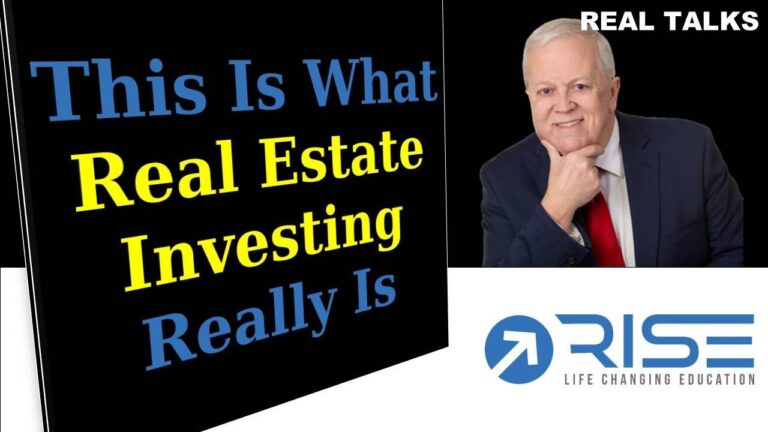
What Is Your Mindset About Investing?
One of the first things you need to do before you start investing in anything really, whether it’s real estate or any other type of investment, is to figure out what your attitude is or what your mindset is towards investing. You have to understand what types of limitations you have and how to overcome or adjust your thinking basd on nthose limitations.
Stock Market
Years ago, a lot of people were comfortable investing in stocks and bonds. And there wasn’t a lot of hesitation … and I’m talking a lot of years ago because they were comfortable with the stock market. They’ve heard about it. They felt it was a good place to go. It was a safe place to go because it’s regulated. And so when they would invest in the stock market, they knew that they were being presented with an opportunity which had some sort of guidelines, some sort of restriction, some sort of controls around what they were being presented, what they were being offered.
Mutual Funds
And then to further help reduce the risk associated with those types of investments they came up with mutual funds. They started offering things called mutual funds. Mutual funds were built to help people focus on their investments. They have mutual funds focused on US stocks, mutual funds focused on Canadian stocks, mutual funds focused on the technology sector, and mutual funds focused on the energy sector. I guess that’s one advantage if you’re looking to get into a specific field
The other type of mutual fund that was created, or I guess that was available is mutual funds that are offering diversification. So, you could get a mutual fund that has a certain percentage in one sector, a certain percentage in another sector, or a certain percentage in a geographical area.
So mutual funds were helping people make decisions for themselves around what type of stock they want to invest in.
Risk
The other thing you need to consider when looking at getting into real estate investing is how comfortable are you with an investment from a risk perspective. Risk will vary depending on your age and depending on the amount of money that you have. So for example, if you’re just getting started out, if you’re a younger person, maybe your risk tolerance is a lot higher so maybe you want to invest in unknown entities, unknown stocks, unknown asset classes. Because if you fail in an investment your thinking is that you have a bit of time to recuperate from your losses. Whereas if you’re older and you’re looking to build up a pension plan or if you’re looking to invest for retirement, you may not have as much time to respond to any type of losses that you may have incurred as a result of a bad investment, which is not something you want to do anyway. But, you also have to be prepared for losses.
How Much to Invest
The other aspect of investing is how much money do you have to invest.
So, if you’re a wealthier investor or somebody with a little bit more money than let’s say someone else … I guess it really doesn’t matter how much money you have … but what you want to do is you want to look at a certain percentage of money that you’re going to allocate to a particular investment. If you’re looking at getting into a private equity investment, and you’re not sure about it, it’s your first time and you’ve heard about private equity investments and you’ve seen some people get pretty good returns, you may want to allocate a certain percentage.
You’ve talked to an investment advisor who’s offering private equities and you feel more comfortable with getting into that type of investment. So, a consideration when you’re looking at investing in private equities is how much money do you want to actually allocate to that type of investment? It will vary too. For example, you could say, okay, I want to put 10% of my portfolio into that investment. I want to put 20% into that investment, whatever you’re comfortable putting in. So how much money you have, will determine how much money you’re willing to risk. But you could use a percentage which then will vary depending on how much money you do have. So for example, if you’re looking and you have, let’s say a million dollars that you’ve allocated to your investment portfolio or that you’ve accumulated into your investment portfolio, and you could say, okay, well, now I’m interested in private equity, but I’m only going to allocate 10% of my portfolio to private equities.
So that’s another way of managing your risk, is diversification.
Investment Timeframe
And then finally the other aspect that you want to look at when you’re investing is what is the time frame you are looking for for your investment.
Are you looking for a short-term investment, meaning are you looking for something that you can get out of in a year or two or three, or are you looking for something that you’re okay with waiting for 3, 4, 5 years, some longer-term investment? The timeframe will determine what you’re looking at when you’re trying to get involved in any type of investment.
You can have some short-term investments in real estate too … like a one-year mortgage, for example. Or you could look at private equity that only exits after five years.
Okay, so those are the thing needs to think about when starting to invest to get your mindset right, to get your attitude right toward investing.






